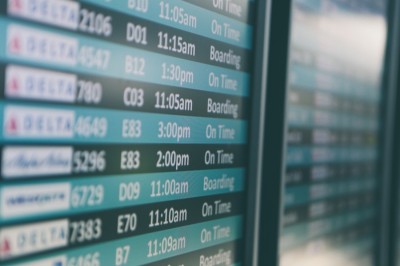Connected baggage, robots, virtual reality, big data, and drones will be part of your travels soon. Just how will they, along with other technology trends, create a better experience for travelers?
Robotics combined with artificial intelligence
You can already experiment with robots that deliver room service, guide passengers to departure gates, or provide translation assistance. But would they be able to understand informal languages such as slang, idioms, local dialects or irony? Combining their capabilities with Artificial Intelligence (AI) so they are able to recognize emotions, group behaviors, and proactively respond to unexpected situations, give them the potential to provide the next generation of customer service.
Self-service, yes, but how about biometric self-service?
Biometrics improve security and the passenger experience by making it faster and easier. The best example of this can be found at Auckland Airport, where Air New Zealand recently installed the first of 13 biometric-enabled self-service bag drop units, which feature an embedded camera to capture an image of the passenger’s face at the point of bag drop. The challenge most airports and airlines now face is the creation of a single token which can link passengers’ biometric data to their boarding pass and passport to remove the need to present their documents at multiple stages of the airport journey.
Big Data for more personalised travel
Personalization thanks to big data models, will occur at all steps of your journey. For example, a hotel can store and analyze a frequent guest’s preferences and implement them for future stays. Similarly, Disney uses its MyMagic+ wristband system to collect information and when you visit the resort they are able to offer the best user experience to all visitors.
Connected luggage, virtual reality, and drones
With one bag lost nearly every second, there is no doubt that permanent electronic bag tags and GPS-based tracking devices will appear in a massive way. The challenge now for all players in this ecosystem (airlines, airports, vendors, countries) is to find a standardization process to enhance the end user experience and allow them to have a unique tag working everywhere.
With so many drones in consumers’ hands, they are the new selfie stick. Drones can give you that awesome aerial shot no regular camera or smartphone could capture. But inexperienced drone pilots have caused numerous incidents that have led to bans, such as the one imposed by the National Park Service.
Soon, Virtual Reality is going to be on each traveller’s head. VR devices will provide a completely immersive user experience. This will allow developers to create the best content to promote destinations, such as helping you discover your future hotel in a more immersive way than Google Earth or other 3D photo galleries allow.
We expect many of the things that were once the lore of science fiction to become ubiquitous during the travel experience this year. What do you think?
This article originally appeared here. Republished with permission. Submit your copyright complaints here.




![Ride-sharing impact on drunk driving in the US [Infographic]](https://crayondata.ai/wp-content/uploads/2022/05/driving-1.jpg)


